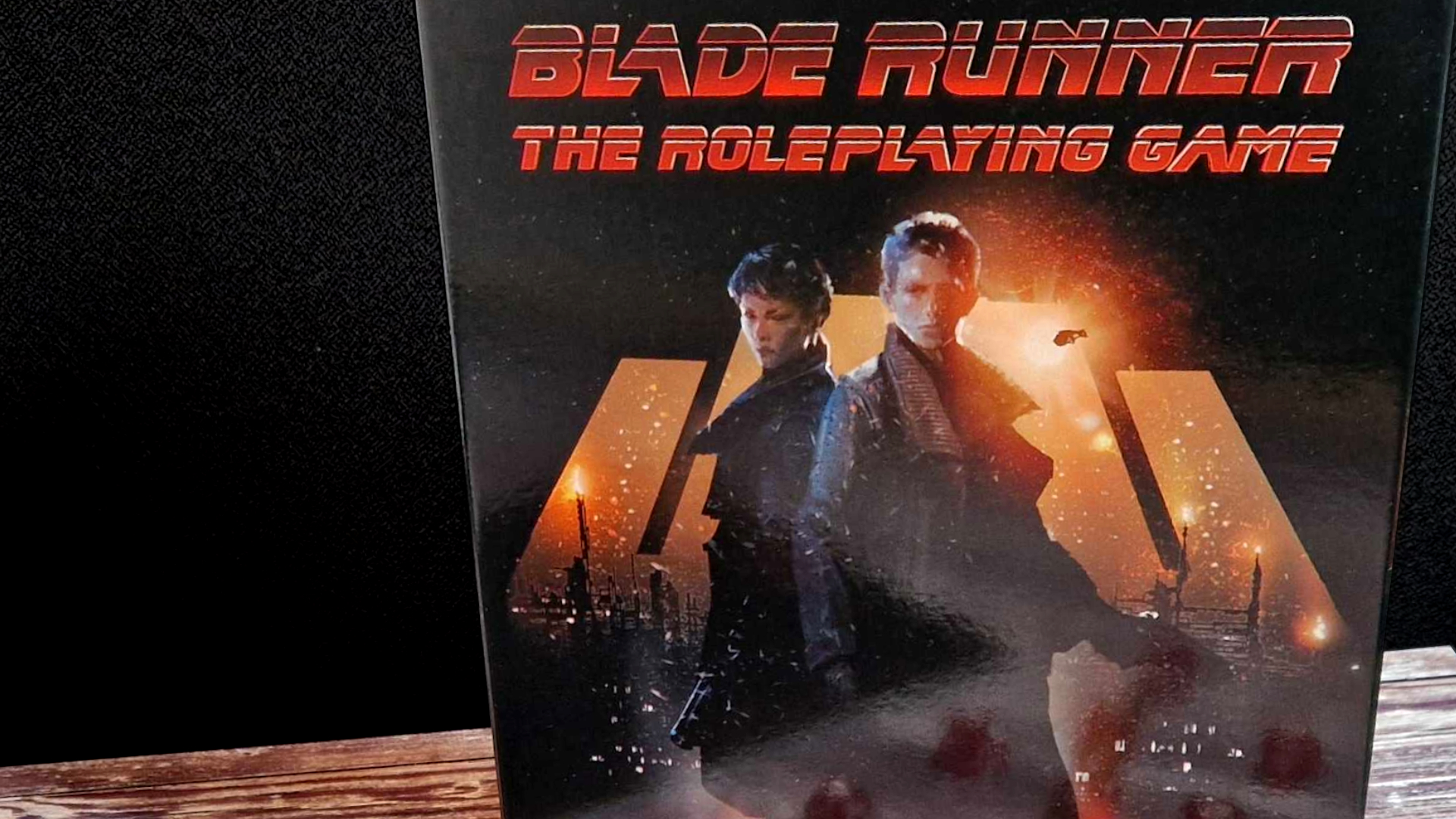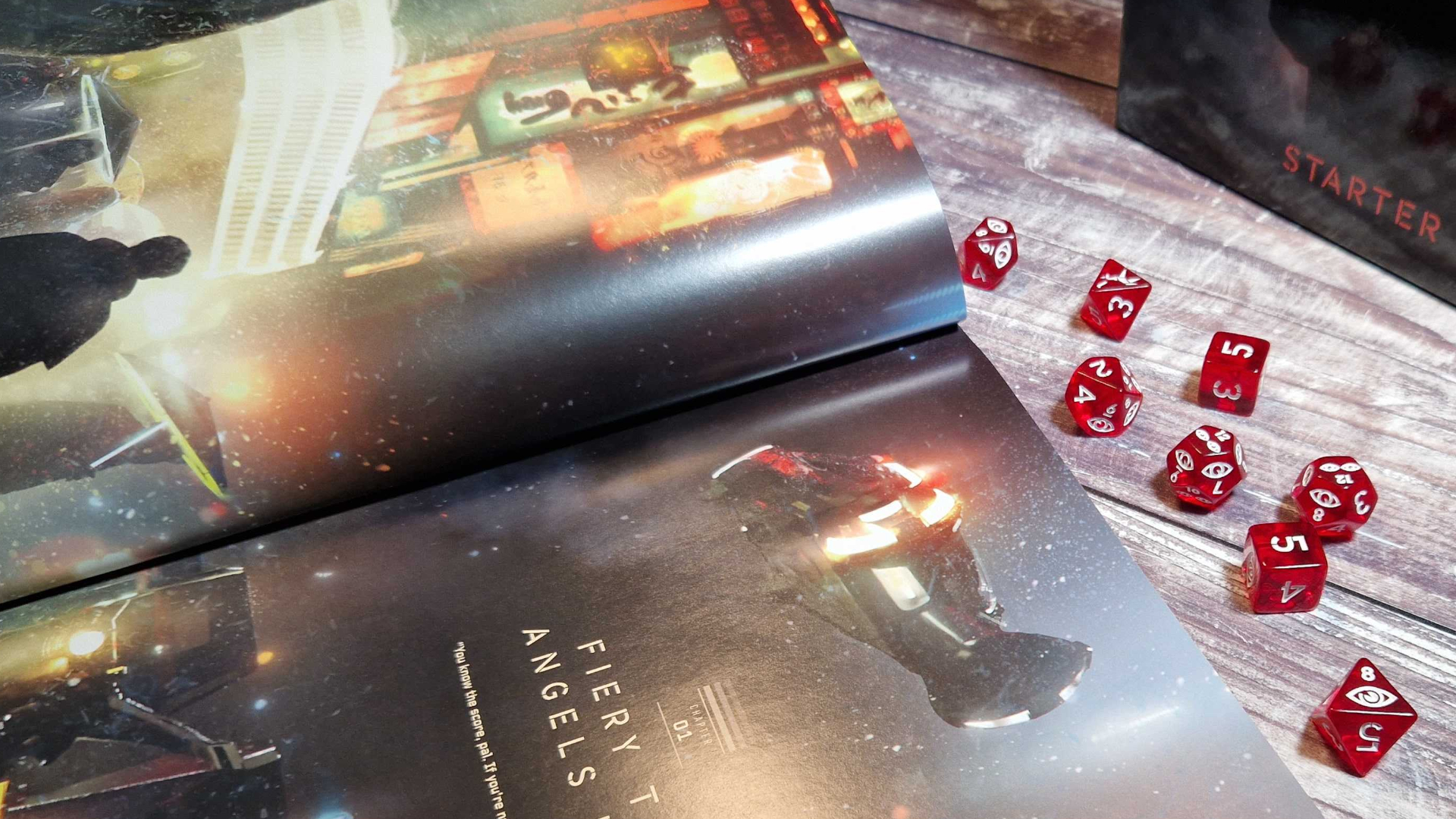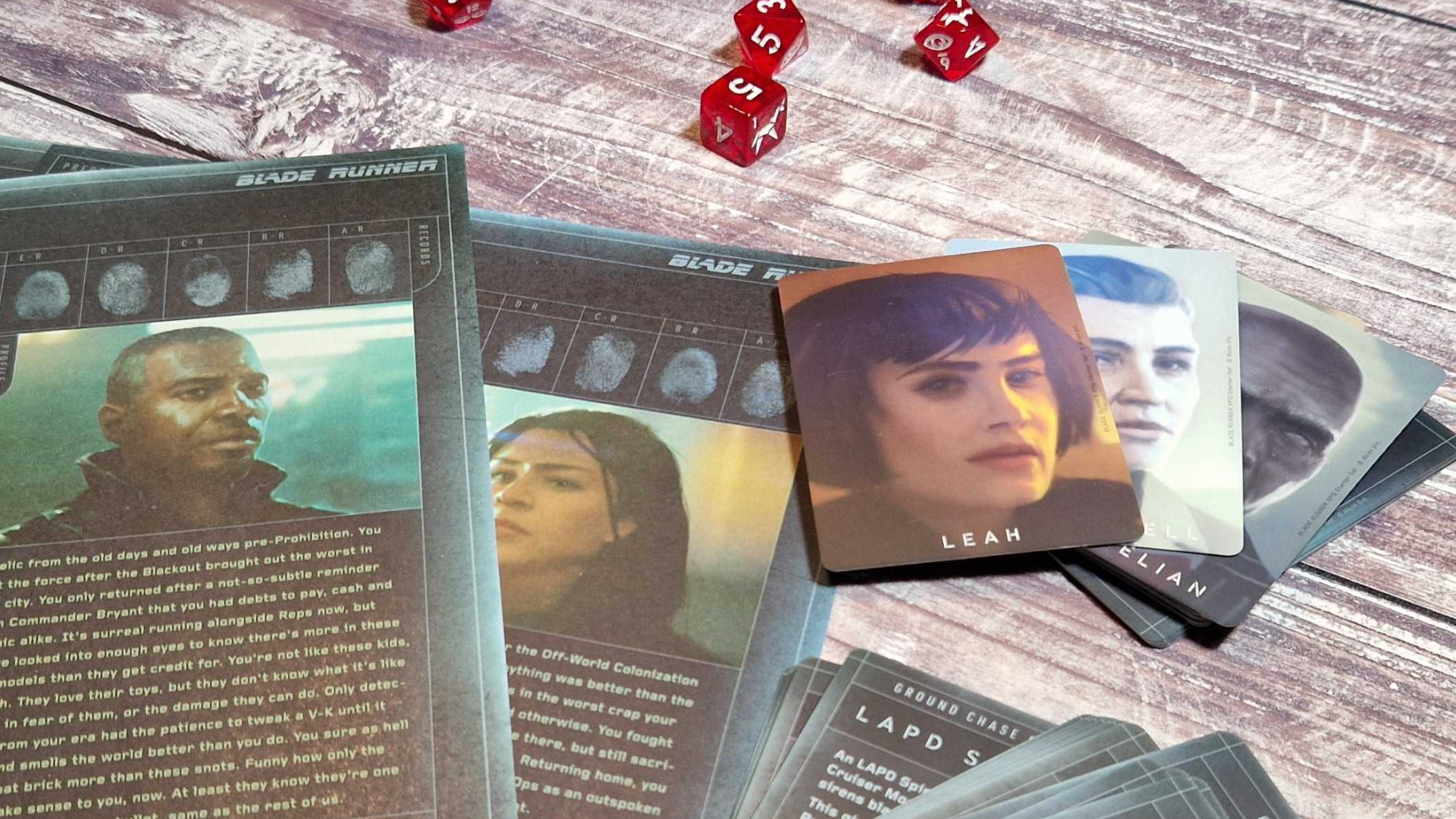
I’ve seen things in the Blade Runner RPG Starter Set you people wouldn’t believe… attack rolls that count for double. A player sacrificing her character for the life of an NPC. The look on the faces of players finally piecing together a twist as I hand them the final piece of evidence they need... All those moments exemplify that Blade Runner The Roleplaying Game is a great time, and this beginner box is the perfect route in.
It’s built on Free League’s Year Zero engine, which they’ve previously used for games like Alien: The Roleplaying Game and Tales from the Loop (both games I’ve very much enjoyed in the past). Here, though, Free League has adapted the system to better fit the noir-inspired world of Blade Runner, and whilst it is, for the most part, a roaring success, there are some areas within the Blade Runner RPG Starter Set where they just don’t seem to want to sand off the edges from Year Zero.
Blade Runner RPG Starter Set features & design
- Set between the first and second movies
- Uses Year Zero system
- 'Shift' mechanic taps into the noire vibe
If you know about Blade Runner lore, then it still might not mean much if I told you this game is based in 2037. To translate, this is over a decade after ‘The Blackout’ - a pivotal event in the post-first movie timeline, when a replicant terrorist attack destroyed almost all stored data in the country. It's also over a decade before Blade Runner 2049, and the game lightly explores the rise of the Wallace Corporation from that movie. Being based in-between the first and second movies also allows the designers and Game Masters to slide into a mid-point between the gritty noir vibes of the original movie and the more personal odyssey of 2049.
For anyone not familiar with the system, it’s not quite as immediately approachable and easy to wrap your head around as, say, the Kids on Bikes system, but it’s pretty damn close. Unlike in many other systems where you ostensibly want to roll as many dice as possible, players will always roll two in Year Zero games (though you can use a D8, D10, or a D12 depending on their character's related stats). Moreover, rolling a 10 or more on any dice is considered a double success.

You can also push your luck to reroll dice that weren’t initially a critical failure, but you risk inflicting bodily harm to yourself or weakening your resolve.
Replicant characters can push twice but always take the damage to their resolve. This is a very stripped-bare rundown of what most of the game’s play will involve, but where this system strikes out for itself is in the addition of shifts - the basis of investigations. Every player character gets four shifts every day, and must choose what they want to do in any of those shifts. They can choose to have a shift of ‘downtime’, but if they don’t their character will suffer negative consequences from overworking. The twist comes with the fact that you’re not the only one subject to time passing. You’ve got limited time to do your investigation, and if you fail, you could lose the thread of the entire case, meaning you’ll have to face the wrath of your boss.
Blade Runner RPG Starter Set gameplay

- Player handouts are incredibly atmospheric
- Really strong storyline
- 'Chase' mechanic isn't for everyone
With that ticking clock behind them, shifts are a tightrope walk that do a good job of keeping tension high and forcing players to make hard decisions with their time whilst still providing enough opportunities to do everything you need. These two systems - stats/rolling and shifts - essentially make up the roleplaying portion of the game, and it’s where it excels.
Where it isn’t so strong is in the ‘chase’ mechanic. The starter set comes with an extensive set of cards laying out things that may happen during ground chases, foot chases, and sky chases, and I’ll say this much - the mechanic works, as in it literally functions, but in all the campaigns I’ve played it’s never once been what one might term ‘exciting’.
The concept is there. After all, one of the most iconic scenes in the original Blade Runner movie was Deckard chasing a replicant through the streets only to take her out as she smashes through entirely too many panes of glass. Trying to recreate that feeling for players only makes sense. Unfortunately, this cards-and-rolling system only really gets tedious, feeling more like you’re playing a randomized dungeon crawler like Paper Apps Dungeon rather than the investigation-based detective game you came here for.

Because the Blade Runner RPG has been out for a couple of years now, this beginner box isn't all that's available. Alongside the core rulebook with its deeper dive into the mechanics and world of Blade Runner, Case File 02: Fiery Angels is a campaign that "explores the boundaries of Replicant technology and its consequences." This is followed by Replicant Rebellion, a story which sets you on a collision course with the establishment.
Nevertheless, the rest of the game’s systems come together to create a solid detective simulation. Yes, it’s very different from the best tabletop RPGs a lot of players will be used to creating campaigns for. But luckily, this starter set gives you everything you need to get started.
After opening and unpacking the starter set I was overjoyed. There aren’t many TTRPGs I’d say have to be played physically, but this is one of them. Often starter sets will include a starter campaign, a cut-down version of the core rulebook that only contains everything pertaining to the starter campaign, and a set of whatever dice you need to play - and this game is no exception, other than one thing… A manilla folder. I’ve had starter sets before, or even pre-made campaigns that include maps, notes, and perhaps some other trinkets, but as a huge fan of the Blade Runner movies, I was ecstatic to see all of the included ‘clues’ and props with the Blade Runner RPG starter set.
At the beginning of the starter campaign, you’re asked to give a specific player a newspaper that’s included with the set. It’s an immediate tone-setter, both for the story and the character. From there, Game Masters get the joy of passing around printed case files, briefings, crime scene photos, fictional marketing materials, and more. I’ve never seen a pre-made campaign with handouts this extensive. These, along with the larger-than-average fold-out map, allow you to create a real sense of atmosphere around your games.

TTRPGs are often expensive, but inclusions as detailed as they are here make it feel very worth the price of admission.
Still, it’s all well and good creating this finery, though it’d mean nothing if the included campaign is no good. Luckily the fittingly titled ‘Electric Dreams’ is the perfect balance of approachable for newbies and satisfyingly thoughtful and complex for seasoned franchise fans or tabletop players. This campaign, which purports to be the first entry in a series of pre-written campaigns that can be played as a cohesive story arc, centers (unsurprisingly) around the player characters - in the shoes of Blade Runners - being tasked with finding escaped replicant units. Based in 2037, after the blackout but some time before the events of 2049, escaped replicants are in some ways more numerous whilst simultaneously being harder to find than ever.
This brisk campaign booklet does a good job of weaving a story with interesting characters, arcs, and mysteries to uncover, leading to a dramatic climax that ties everything together nicely. It’s really very strong, but I worry that certain groups of players and less story-interested GMs might miss out on or skip over some of the character moments the game is trying to push towards. Particularly the central NPC characters of the story have very deep internal conflicts for a starter set of a tabletop RPG, and it’d be easy to present this wrong as a GM interpreting it, leading to the overall story suffering.
Should you buy the Blade Runner RPG Starter Set?

The Blade Runner RPG perfectly captures the atmosphere of the source material; it works perfectly with a group as big as four but is even better when you’re playing with just two. This starter set contains everything you need to play through an immersive and well-designed story that’s sure to stick in your mind for weeks after and lead to numerous unique situations with players.
Do be warned, however, that it’s best to intimately familiarize yourself with the characters of the story, as well as maybe adapt the chase system to how you want to play (or just not use it altogether).
Buy it if...
Don't buy it if...
How we tested the Blade Runner RPG Starter Set
After familiarizing themselves with the rules, our reviewer ran through the featured campaign a couple of times with different players to get a better sense of the system and its storyline. They led these sessions as the Games Master.
For more, check out our guide on how we test board games and tabletop RPGs or the general GamesRadar+ reviews policy page.
If you're looking for other recommendations, don't miss these must-have board games for adults or 2-player board games.







